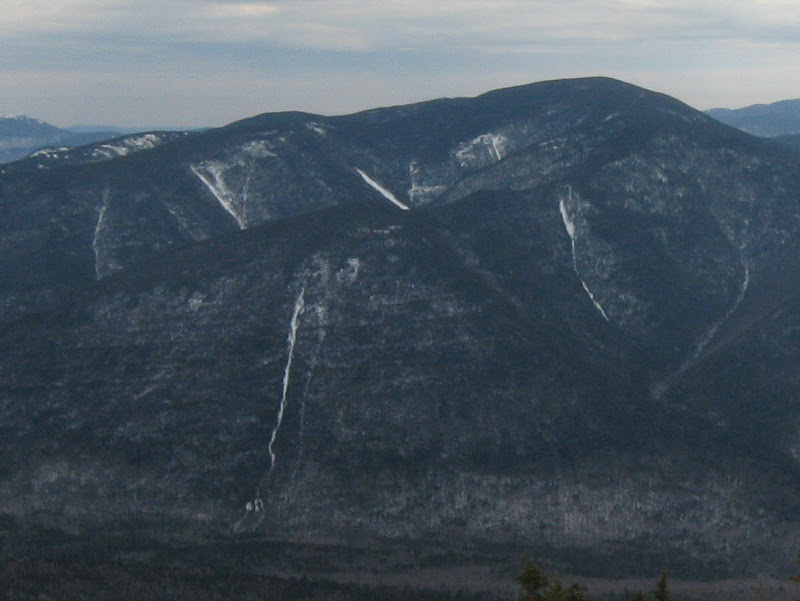So I'm in the Pemi, a ways Down the Cedar Brook Trail not all that far from the Wilderness Trail and I find a logging road or rail line in the woods not on the trail. I spotted it in the dark and sure enough in the morning, there it was clearly distinct. It eventually becomes part of the Cedar Brook Trail where the trail approaches the river.
To get to the first point: I was under the impression that the last logging in the Pemi occurred at least 90 years ago (early 1920's) and most of it longer ago than that, yet these roads/rail lines are still very distinct and surprisingly free of trees older than 5-10 years. So why don't trees grow there now? What kinds of nasty stuff did they use to keep the line vegetation free? You see the same effect at the old camps along the wilderness trail too and in one thread here Dave M. has a picture of Owl's Head Mtn. where you can see the line distinctly from great distance.
My next point is hopefully not too political: I can only remember a few fire rings that I have seen that were NOT illegal. I saw a dozen sites this weekend that were too close to the trail, too close to the water or both and one site with a fire still burning! I know that the rangers see this and I dread what may come of it. I spoke to a ranger this summer who told me that it was his pet peeve to see people make fire rings a) that were illegal and b) unnecessary (LNT). I see a time in the near future where fires are not allowed in the WMNF because people just won't follow the rules.
OK last point: The bridge removal projects are supposed to be partly to bring the wilderness to its wild state yes? So why then are all of the bridge parts still littered all over the trail? The wood is stacked up and covered in lovely green tarps and the cable is lying stretched out over 100 yards of trail. Seems to me if you are trying to return to wilderness you practice LNT for your bridge removal. This one doesn't bother me so much, but does seem a little hypocritical.
To get to the first point: I was under the impression that the last logging in the Pemi occurred at least 90 years ago (early 1920's) and most of it longer ago than that, yet these roads/rail lines are still very distinct and surprisingly free of trees older than 5-10 years. So why don't trees grow there now? What kinds of nasty stuff did they use to keep the line vegetation free? You see the same effect at the old camps along the wilderness trail too and in one thread here Dave M. has a picture of Owl's Head Mtn. where you can see the line distinctly from great distance.
My next point is hopefully not too political: I can only remember a few fire rings that I have seen that were NOT illegal. I saw a dozen sites this weekend that were too close to the trail, too close to the water or both and one site with a fire still burning! I know that the rangers see this and I dread what may come of it. I spoke to a ranger this summer who told me that it was his pet peeve to see people make fire rings a) that were illegal and b) unnecessary (LNT). I see a time in the near future where fires are not allowed in the WMNF because people just won't follow the rules.
OK last point: The bridge removal projects are supposed to be partly to bring the wilderness to its wild state yes? So why then are all of the bridge parts still littered all over the trail? The wood is stacked up and covered in lovely green tarps and the cable is lying stretched out over 100 yards of trail. Seems to me if you are trying to return to wilderness you practice LNT for your bridge removal. This one doesn't bother me so much, but does seem a little hypocritical.

